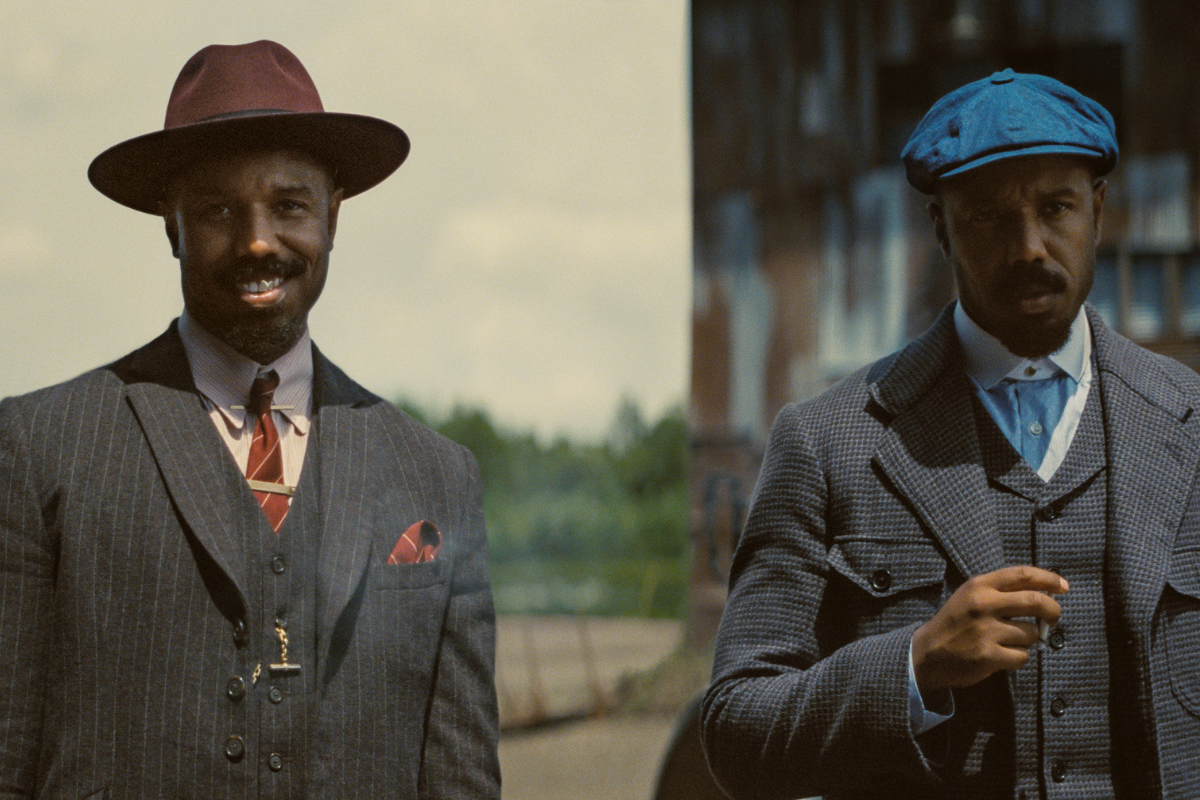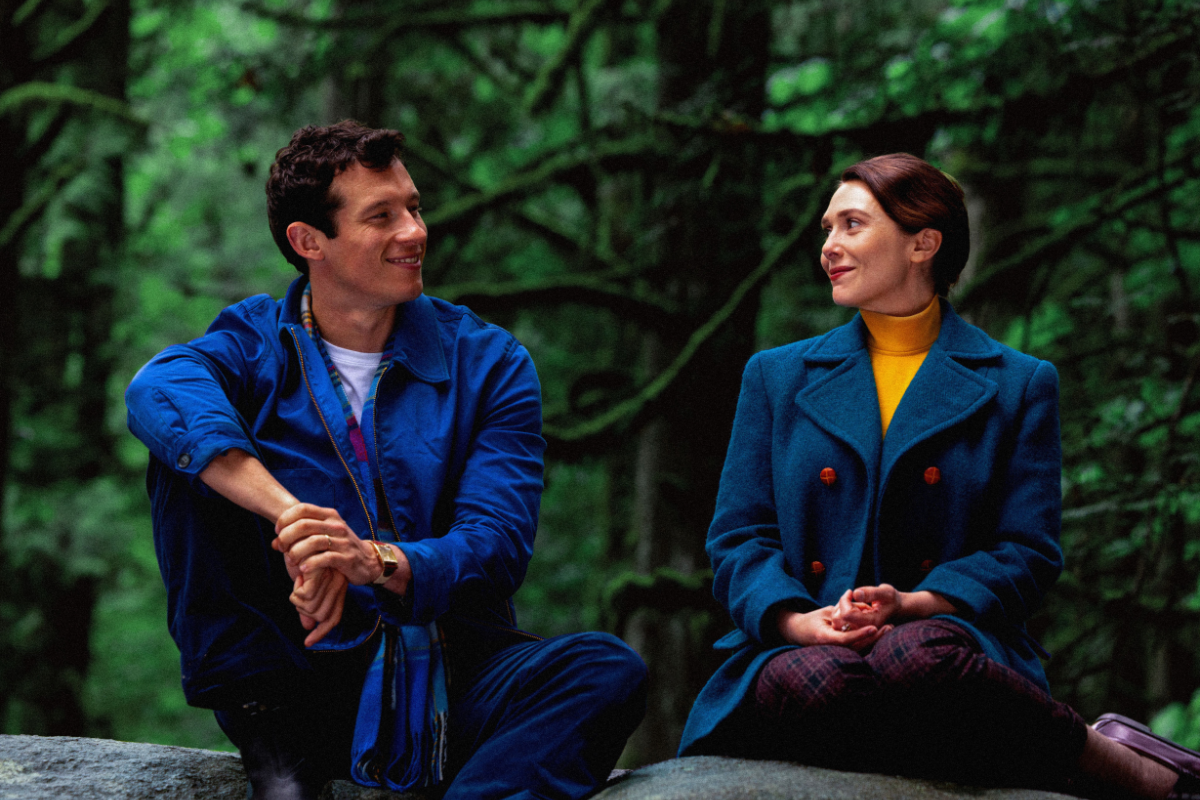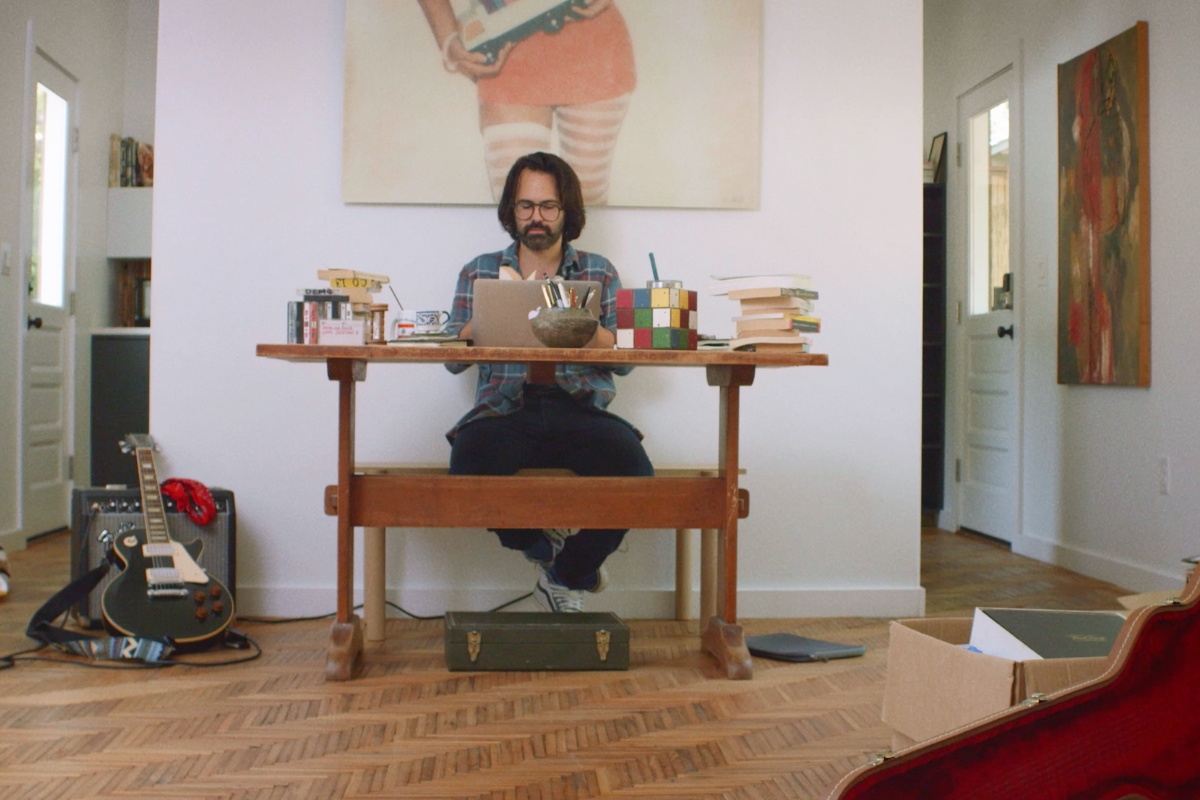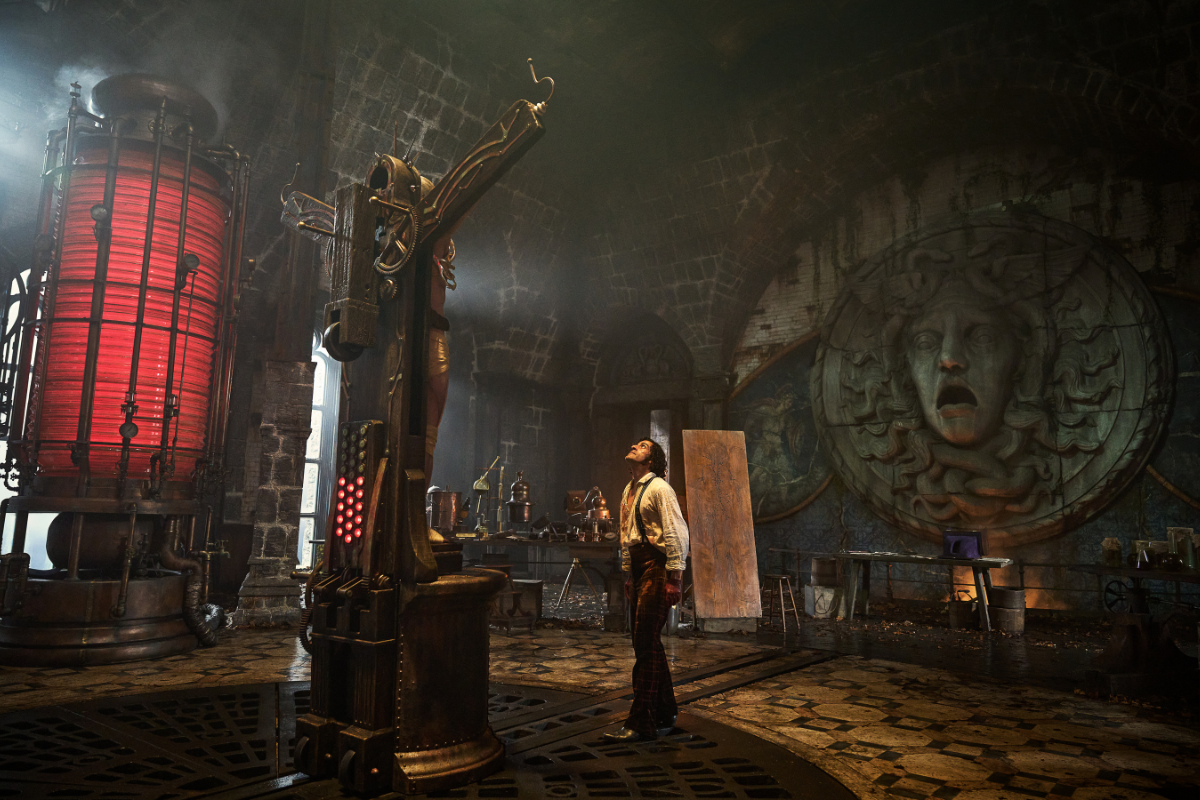SCRIPT SECRETS: Low-Budget Screenwriting, Part 3
What exactly *is* low budget? Does it mean just a small drama? No action scenes? Writing for budget is complicated, and a small drama might be more expensive than an action screenplay. In Part 3, we look at fun things like “Dog Juice” and “Imagination Harvesting” and Story-Driven screenplays and why you might want to Avoid Dialogue!
What exactly *is* low budget? Does it mean no explosions? No science fiction and no special effects or spaceship battles? Can it only be a small drama? Writing for budget is much more complicated than that, and as I said in the first two parts (read part 1, and part 2), a small drama about a family trying to save their farm from foreclosure might be more expensive to make than a science-fiction screenplay with a spaceship battle. The things that you think are expensive may not be as expensive as the things that you don’t think about—like the number of locations and speaking roles and how close two people are standing to each other during a scene at night. Since this is the last entry in this series on Writing For Budget, let’s look at some of the fun stuff like Imagination Harvesting and Dog Juice...
THE LAST 5 STEPS TO A LOW-BUDGET SCREENPLAY
The final five. Though these 15 things are aimed at writing a low-budget screenplay that you can sell, they also work for writing a low or no budget screenplay to make yourself. As I said in the first entry, if you plan on making your own movie, you will need to write a screenplay specifically using locations, and all of the other elements that you already have access to. I get deeper into this in my Write It Film It It book—including what sorts of things you need to begin collecting (including people) long before you get ready to make your film or even write your screenplay. But these final five items are especially important for Do It Yourselfers, though they are one of the reasons why I have sold budget-friendly screenplays to companies that made them for HBO and Showtime and MGM Home Video and 20th Century Fox (which is no longer with us). These are five critical things for any low-budget screenplay, beginning with...
11) STORY / SCRIPT DRIVEN
In addition to that amazing high concept that we talked about in part one of this series, you need to make sure that the story has all of those big explosive pyrotechnics that you can’t afford on this budget. They have to be *story* pyrotechnics... because the screenplay is what is carrying a low-budget movie. It’s not going to be the star, and there is no huge special effect budget or experienced stunt team. Your screenplay needs plot twists and tension and clever dialogue and emotional scenes and all of the big dramatic elements that don’t cost any money. A screenplay filled with clever dialogue costs the same as the same screenplay with average dialogue. So, guess which screenplay sells? How much does a plot twist cost to film? How much does a scene filled with tension cost to film? How about a big dramatic scene? Or an emotional moment that will make the audience cry? The writing is the most important element of a low-budget movie... and that’s all us. Our job. We have all seen a big-budget film with an iffy screenplay but amazing stunts and effects or just amazing acting. We can’t afford any of that. it’s all about the screenplay. Of course, writing that amazing screenplay with all of those plot twists and clever dialogue and everything else isn’t easy!
Now let me make this even more difficult: instead of your favorite actors delivering those clever lines perfectly, imagine an ex-athlete and an ex-model who was once famous for posing in an itty bitty bikini on YouTube. Imagine someone who is famous because they were on a reality show. Imagine a local actor who has only done community theater and isn’t really that good. That’s your cast. So, instead of depending on their *amazing line delivery*, you need to write clever lines that are “actor proof”—that can be delivered blandly or even badly, and still work. Hey, that Oscar-winning screenwriter who has an Oscar-winning star delivering their lines doesn’t have to face the challenges that a low-budget writer with an ex-athlete delivering their lines does! Often this means that the *situation* that we create in the screenplay does the acting while that ex-athlete just stands there, looking serious. We can’t depend on the talent of others to help us, we may be carrying the whole film with our story and scenes and situations. The concept needs to be interesting enough to carry the film, yet not expensive to film.
This is one of those places where having a limited number of locations actually helps. If your hero and villain are stuck in the same location, that automatically builds tension and creates conflict without any acting required. But you still need to “actor proof” your dialogue so that they don’t require great delivery—the words do the acting. The words have an impact. The words create the drama. Yes—much more pressure on the writer on a low-budget screenplay.
If the effects or stunts or actors aren’t the star, that leaves our screenplays. The script and story need to be the star. A clever concept with lots of great twists adds entertainment value. Great dialogue exchanges with clever lines will help make up for that cast of unknowns—as long as the lines themselves are clever and don’t require a specific delivery. The only thing they can depend on is your script, so make sure it's amazing. The story itself needs to be the star.
12) DOG JUICE
Here’s the problem with low-budget films—they are competing with big-budget films... without the money to hire a big-name star or a ton of special effects or a bunch of amazing stunts or all of the other things that make a big-budget film usually the audience’s first choice. It takes the same amount of time to watch a 2-hour low-budget film and a 2-hour studio blockbuster—and it costs the same amount if you rent it from Red Box or watch it on Netflix or see it at a drive-in. Which movie do you think the audience is going to choose? The one with the movie stars? Or the one made for a fraction of a fraction of the cost? To make matters worse—that big Hollywood blockbuster is likely to be closer to 3 hours, and that low-budget film is likely to be closer to 90 minutes. Twice the entertainment for the same rental cost (though more time spent watching). A low-budget *screenplay* needs to make up for the stars and the special effects and stunts. People would probably pay to see a big movie star sit in a chair for a couple of hours, but in a low-budget film there isn’t going to be a big movie star, so the *story* needs to be amazing. The story is going to be the star.
Which leads us to “entertainment value,” which I call Dog Juice. I believe that all dogs have the exact same amount of energy regardless of the size of the dog. So, a St. Bernard has the exact same amount of energy as a Chihuahua. But what isn’t enough energy to power a big dog, is too much energy for the small dog. St. Bernards are slow and seem lazy, Chihuahuas are hyper. Okay—every film needs the same amount of entertainment value. It takes us the same amount of time to watch them, it costs the same amount to rent them... we need to be just as entertained by a low-budget film as a big-budget film. In addition to that clever dialogue and those twists and that tension, we want *more* excitement to make up for the lack of movie stars and big stunts. A big Hollywood movie might have an amazing car chase, so we need two of three scenes that add up to the same amount of excitement—we need faster pacing and more extreme action. Or more extreme horror, Or more extreme whatever the genre is. A low-budget screenplay is like a Chihuahua, it needs to be hyper.
Back in the days of Blockbuster Video Stores, they had a section called “Super Action," and that’s where I went to find all of my movies. Super action was the kind of extreme action stuff that you couldn’t find in most Hollywood films. Wall-to-wall action. So, think about the *entertainment value* of each scene—make sure that you have enough excitement to make up for the lack of stars and special effects and huge stunts.
Whether your script is a comedy, a thriller, or a drama, you have to make sure it is well-paced. Have conflict in every scene. Conflict is the fuel of drama, and film is a dramatic medium. If a scene doesn't have any conflict, it doesn't belong in your script. Now take that conflict to the limit! Any argument between two people becomes more intense if one or both of them have a weapon in hand.
13) IMAGINATION HARVESTING
Sometimes the greatest special effects are in the audience’s imagination. In the Write It, Film It book I look at some Hollywood style high concepts that could easily be done on a low budget and I look at Coherence. That’s a film that is as much of a mind-bender as The Matrix and filled with twists and creepy scenes—imagine kissing a woman who looks just like your wife... but isn’t. She’s a duplicate. The film has a comet that rips a hole between parallel universes, and strange things happen during a dinner party among friends. Some of these friends may be duplicates from a parallel timeline. All of this was done for $50K... and the audience’s imaginations. The diamond robbery in Reservoir Dogs? We get a detailed planning scene and some quick shots of the heist—and those shots don’t really show anything. It’s the planning scene that allows us to imagine all of the details that are not in those quick shots.
Though if everything happens off-screen, the audience will become suspicious—if you use the audience’s imagination to augment things that we *can* see, we will believe in something that may not actually exist. Imagination Harvesting is used all the time on TV and even in big Hollywood movies—you see a shot of a plane landing, then see the skyline of San Francisco, then cut to the interior of an office building as your protagonist enters... and we just imagine that they flew to San Francisco... when that office building is in Vancouver (where filming is less expensive). The Blumhouse movie INVISIBLE MAN takes place in San Francisco but was shot in less expensive Australia with some stock footage shots. Film is the juxtaposition of images, so if we see the Golden Gate Bridge and then see a man walking down a street, we just assume that the street is in San Francisco. If we have a crew of crooks planning a diamond robbery in a warehouse and we see schematics and pictures of the diamond store, when they come back to the warehouse after the robbery we will imagine the robbery! Add in some quick cuts of people with guns and some shots of hands grabbing diamonds, our imaginations fill in the rest. We have “seen” the robbery in our minds!
On my HBO World Premiere Flick Steel Sharks we had a little problem: the special effects guy who managed to get us the submarine miniatures from Hunt for Red October to use in our film Crash Dive film had a bit of a dispute and was let go... and now we needed him for this new film. Or did we? I figured out a way to use the submarine footage that we already had from the previous film, and to create shots that didn’t exist in the audience’s imagination by having the sonar show the sub moving in a way that it hadn’t in any of the existing footage, then having a crew member point to the *sound* of the submarine as it moved past. That combined with shots of the submarine made the audience imagine that they saw it doing a maneuver that we didn’t actually have footage of. You’ve seen Hollywood films where a crowd of people all tilt their heads up slowly following something that is ascending—but you never see the crowd and the spaceship or superhero or whatever that is ascending in the same shot... you just think you did. Using the audience’s imagination is a great tool, whether you are making a monster movie or a science fiction or a jewel heist or just having a character globe-trotting when you film the whole thing in your backyard.
14) VISUAL STORYTELLING
One of the problems with low-budget films is often bad sound. Because they are unable to control the environment through bribes to get people to stop mowing their lawns or practicing for the high school marching band, plus usually no boom operator and often rooms with terrible acoustics, dialogue-heavy films can be a problem on a limited budget... yet people think that writing some sort of dramatic dialogue and character-driven stage play that can be filmed is a great idea. Nope! Sound is a low-budget issue! These films often end up static shots of people sitting on a sofa for ten minutes having a conversation with the camera never moving... and someone mowing their lawn in the background. You want to avoid that! One of the elements of a film at any budget is that it needs to be exciting and interesting enough *visually* to get people to watch it in the first place and then recommend it to friends. A 90-minute gabfest is probably not a great idea.
Stage plays are about people talking, screenplays are about people *doing things*. Watch Vertigo, Blood Simple, or The Fugitive with the sound off and you'll see how complex characters involved in interesting stories don't need to talk to be understood. Sure, dialogue is necessary—but remember you are writing a SCREENplay. You want there to be things happening. A low-budget film needs to be more exciting than the big-budget counterpart to make up for the lack of stars.
One thing that can help with a low-budget film are visual sequences that don’t need location dialogue. This is an old school technique from early sound films when cameras were very heavy and very noisy to move Hitchcock talked about writing screenplays where there would be a handful of dialogue scenes in a story that was essentially a silent film. His first sound film “Blackmail” began as a silent film and dialogue scenes were added—making it the first British sound film. Most of the story is visually told, with a few dialogue scenes scattered throughout the film. You never notice that it began as a silent film. The visual scenes are the same sort of scenes that you would find in any other movie... but the visual scenes don’t have dialogue and the dialogue scenes have a stage level of dialogue. Even though a modern camera doesn’t make that much noise when moved, the environment can be noisy and can make sound recording difficult... so, why not just remove the conversation from these scenes? You can still have an added line dubbed in later—those “watch out!” type lines. These don’t have to be *action* scenes, just visual scenes. I mentioned Vertigo—that has a 14-minute sequence without dialogue that is packed with character information! It’s a great lesson in visual storytelling. Private detective Scotty follows his friend’s wife Madeline and discovers that she is possessed by a dead woman... and he also falls in love with her. No dialogue. All visual. All SCREENwriting.
If you save the dialogue-driven scenes for “controlled environments” (indoors) and then keep the cast on their feet whenever possible so that there can be movement and actions even in the dialogue scenes, you will have a more visually interesting scene. We are SCREENwriters, not SPEAKERwriters!
Give the audience something to see. Two people sitting across from each other talking for 90 minutes is boring. Make sure there is action in every scene. Think about using purely action sequences to tell your story. Use visual storytelling techniques. Make it a movie, not a stage play!
15) SHORT BUT SWEET
In my Description Blue Book, I mention that the average studio film costs around $107 million by the time it gets to that cinema near you, and the average screenplay is 110 pages or less, which means that a page of screenplay needs to be worth about $1 million... so you should make sure the dialogue and actions on that page are worth the cost to film it. Although a low-budget screenplay is much, much less expensive, every page is still costing the producer actual money to put on film, so you want to keep your screenplay at around 90 pages. Though it’s not going to cost them a million dollars for every page over 90, it’s going to cost them more money than they might have in the budget. That 120-page screenplay that a studio reader might think is longish a low-budget reader will probably toss aside as impossible. If you are 95 pages, not a problem, but more than that?
And those 90 pages need to be packed with excitement. No padding, no fat of any kind. You want it packed with story! The most exciting 90 pages that anyone has ever read! The Disappearance of Alice Creed is non-stop excitement, and takes place in a 2-room apartment with a bathroom, with a cast of 3, and no shortage of twists and turns and big exciting scenes. It’s like 2 hours stuffed into just over 90 minutes of film (plus closing credits and opening titles). That’s what you are after—short and sweet!
One of the problems with many low-budget screenplays is that they end up “padded” with scenes where nothing happens. Though you might be able to do that in a studio film, a low-budget film needs to be overflowing with excitement. So, you want to keep it around 90 pages but still have all of the excitement of that 2-hour studio film. Alice Creed has more twists and turns and double-crosses and revealed secrets and big dramatic scenes and wrestling for control of a gun action scenes than mots big studio films, but all in a short and sweet running time. The writer-director was originally going to make the film as a no-budget movie, but as with Reservoir Dogs, once a name actor read it and signed on, the film went from something he was going to shoot for pocket change to an actual movie... and is non-stop excitement! Like Coherence, it’s a word of mouth film—people see it and tell their friends they have to see it... and that’s what you want your screenplay to be! Short but sweet! 90 pages with 120 pages of excitement!
These 15 low-budget writing tips (over the three parts of this article) will help you focus your screenplay to the basic requirements that most low-budget producers are looking for, and even help you will larger budget producers (all producers are budget conscious, and if they know that they can make a screenplay for a price, they can add one of those $20 million stars and have a theatrical release for a reasonable price). The Write It Film It Book has more tools and techniques, including the strange concept of writing for a shooting schedule to maximize the costs... something that kept me busy writing movies like the HBO World Premiere flick Crash Dive and many others. But the main things to remember are: Limit locations, limit cast, no uncontrollables, lots of excitement, popular genre, and remember that the finished product needs to be worth much more than the cost of making it.
Good luck and keep writing!
William C. Martell has written 20 produced films for cable and video, including three HBO World Premieres, a pair of Showtime films, the thriller Hard Evidence (Warner Bros.), and the family film Invisible Mom. He wrote an original horror script for a popular streaming service that was released October of 2023. He is the author of The Secrets of Action Screenwriting. Follow William on Twitter: @wcmartell.







